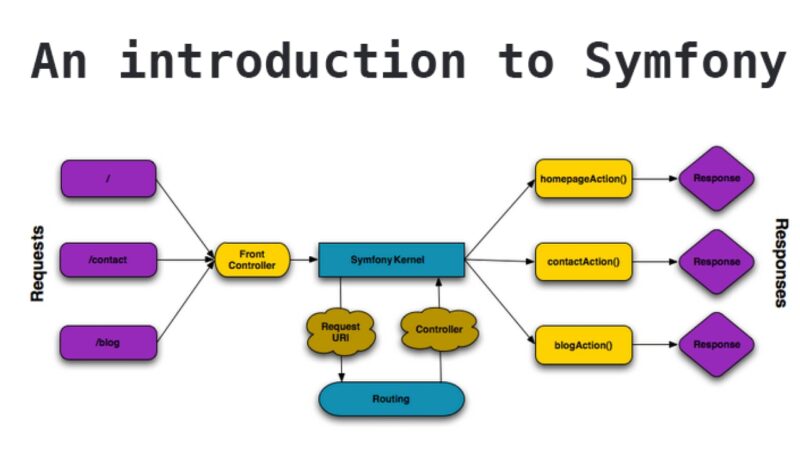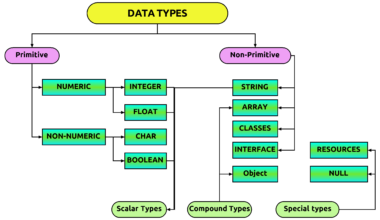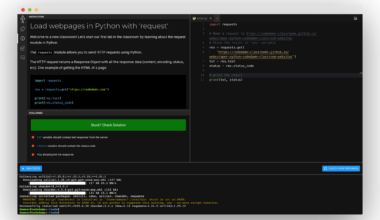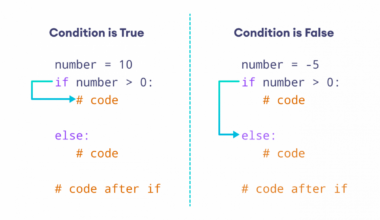Introduction to PHP and Symfony
As a web developer, one of the most important skills you can have is the ability to create efficient and effective web applications. While there are many programming languages and frameworks available, PHP and Symfony have become very popular choices for building web applications.
PHP is a server-side scripting language that was designed specifically for web development. It is open-source, which means that it is free to use and can be customized to fit the specific needs of a project. PHP is also very easy to learn, making it a great option for beginners who are just starting out in web development.
Symfony, on the other hand, is a popular PHP framework that was created to help developers build complex web applications more quickly and efficiently. It is based on the Model-View-Controller (MVC) architecture, which separates the application into three main components: the model (which represents the data), the view (which displays the data to the user), and the controller (which handles user input and updates the model accordingly).
Using Symfony in combination with PHP offers several advantages for web development. Firstly, it provides a solid foundation for building web applications, as it includes many useful features and tools out of the box. This can help to reduce development time and improve the overall quality of the application.
Additionally, Symfony offers a number of benefits for developers, including:
- A large and active community, which means that there is plenty of support available for developers who are just starting out.
- Flexible and extensible architecture, which makes it easy to customize Symfony to fit the specific needs of a project.
- Easy integration with other tools and technologies, such as databases, caching systems, and testing frameworks.
In conclusion, PHP and Symfony are powerful tools for building web applications. Whether you are a beginner or an experienced developer, these technologies can help you create efficient and effective applications that meet the needs of your users. So why not give them a try and see what you can create?
Advantages of using Symfony in developing web applications
Symfony is a highly popular PHP framework that simplifies the process of web development and provides numerous advantages for developers. Here are some of the key benefits of using Symfony in developing web applications:
1. Faster Development Time
Symfony provides a wide range of pre-built components and tools that can be easily integrated into any web application. This allows developers to save time and focus on building unique features that are specific to their project. With Symfony, developers can reduce the time and cost of development without compromising on the quality of the application.
2. MVC Architecture
Symfony follows the Model-View-Controller (MVC) architecture, which separates the application into three main components: the model, the view, and the controller. This clear separation ensures that different parts of the application can be developed independently, making it easier to maintain, update, and modify the codebase over time.
3. Large and Active Community
Symfony has a large and active community of developers who are constantly contributing to its development and improvement. This means that developers can easily find support and resources to help them solve problems, learn new skills, and stay up-to-date with the latest trends and best practices in web development.
4. Flexibility and Customization
Symfony offers a flexible and extensible architecture that allows developers to customize the framework to fit the specific needs of their project. It also provides easy integration with other tools and technologies such as databases, caching systems, and testing frameworks. This makes it easier to build complex web applications that require a wide range of features and functionalities.
5. Better Security
Symfony provides robust security features out of the box, including protection against cross-site scripting (XSS), cross-site request forgery (CSRF), and other common security vulnerabilities. This makes it easier for developers to build secure web applications without having to worry about security issues.
In conclusion, Symfony is a powerful PHP framework that provides numerous advantages for developers who are building web applications. Its flexibility, extensibility, and large community make it a popular choice among web developers worldwide. If you are looking to build efficient and effective web applications, then Symfony is definitely worth considering.
Understanding the MVC architecture in Symfony
Symfony is based on the Model-View-Controller (MVC) architecture, which is a popular design pattern for web development. The MVC architecture separates the application into three main components: the model, the view, and the controller. This separation ensures that different parts of the application can be developed independently, making it easier to maintain, update, and modify the codebase over time.
1. Model
The model represents the data and business logic of the application. It interacts with the database and performs all the necessary operations on the data. In Symfony, the model is usually represented by an object-relational mapping (ORM) framework such as Doctrine. This allows developers to work with the database using PHP objects rather than raw SQL queries, making it easier to manage and modify the data.
2. View
The view is responsible for displaying the data to the user. It receives input from the controller and generates the HTML code that is sent to the user’s browser. In Symfony, the view is typically represented by a templating engine such as Twig. This allows developers to create dynamic and reusable templates that can be easily modified and customized.
3. Controller
The controller handles user input and updates the model accordingly. It receives input from the user’s browser, processes it, and then updates the model as necessary. In Symfony, the controller is usually represented by a PHP class that contains methods for handling different types of user input. These methods interact with the model and the view to generate the appropriate response for the user.
The MVC architecture in Symfony provides several benefits for web development. Firstly, it ensures that the application is well-organized and easy to maintain. By separating the application into three distinct components, developers can work on each component independently and avoid creating messy and hard-to-manage code.
Secondly, the MVC architecture provides better scalability and flexibility for the application. Since each component is decoupled from the others, it is easier to modify and upgrade each component without affecting the rest of the codebase. This allows developers to add new features and functionalities to the application without having to rewrite large portions of the code.
In conclusion, understanding the MVC architecture in Symfony is essential for building efficient and effective web applications. By separating the application into three main components, developers can create well-organized and scalable code that is easy to
Building a Simple Web Application with Symfony
Now that we have learned about the advantages of using Symfony and the MVC architecture, let’s build a simple web application using Symfony. In this tutorial, we will create a basic “Hello World” application that displays a message on the screen.
Before we get started, make sure that you have Symfony installed on your machine. You can download the latest version of Symfony from their
website
.
Step 1: Create a New Symfony Project
Open up the terminal and navigate to the directory where you want to create your new Symfony project. Then, run the following command:
symfony new hello-world --full
This will create a new Symfony project called “hello-world” with all the necessary components included.
Step 2: Create a New Route
Next, we need to create a new route that will display our “Hello World” message. Open up the “config/routes.yaml” file and add the following code:
hello:
path: /hello
controller: App\Controller\HelloController::index
This creates a new route called “/hello” that is handled by the “index” method in the “HelloController” class.
Step 3: Create a New Controller
Now, we need to create the “HelloController” class that will handle the “/hello” route. Create a new file called “HelloController.php” in the “src/Controller” directory and add the following code:
namespace App\Controller;
use Symfony\Component\HttpFoundation\Response;
use Symfony\Component\Routing\Annotation\Route;
class HelloController
{
/**
* @Route("/hello")
*/
public function index()
{
return new Response('Hello World!');
}
}
This creates a new controller class that returns a “Hello World” message when the “/hello” route is accessed.
Step 4: Start the Web Server
Finally, we need to start the Symfony web server to test our application. Open up the terminal and navigate to the “hello-world” directory. Then, run the following command:
symfony server:start
This will start the Symfony web server and display the URL for your “Hello World” application. Open up your web browser and navigate to the URL to see the message.
Congratulations! You have
Final Thoughts on PHP and Symfony for Web Development
PHP and Symfony are powerful tools for building web applications that can help developers create efficient, effective, and scalable web applications. In this article, we have discussed the advantages of using Symfony in web development, the MVC architecture in Symfony, and how to build a simple web application using Symfony.
One of the key advantages of using Symfony is that it provides a solid foundation for building web applications, as it includes many useful features and tools out of the box. This can help to reduce development time and improve the overall quality of the application. Additionally, Symfony offers a flexible and extensible architecture, which makes it easy to customize Symfony to fit the specific needs of a project.
Another advantage of using Symfony is that it has a large and active community, which means that there is plenty of support available for developers who are just starting out. This community also contributes to the development and improvement of Symfony, which ensures that it remains a popular and relevant framework for web development.
When building web applications with Symfony, it is important to understand the MVC architecture, which separates the application into three main components: the model, the view, and the controller. This separation ensures that different parts of the application can be developed independently, making it easier to maintain, update, and modify the codebase over time.
Overall, PHP and Symfony are excellent choices for building web applications that meet the needs of modern users. Whether you are a beginner or an experienced developer, these technologies can help you create efficient and effective applications that perform well and provide a great user experience. So why not give them a try and see what you can create?






















